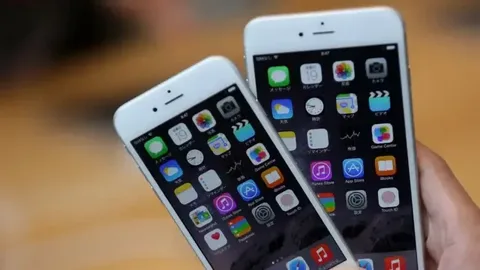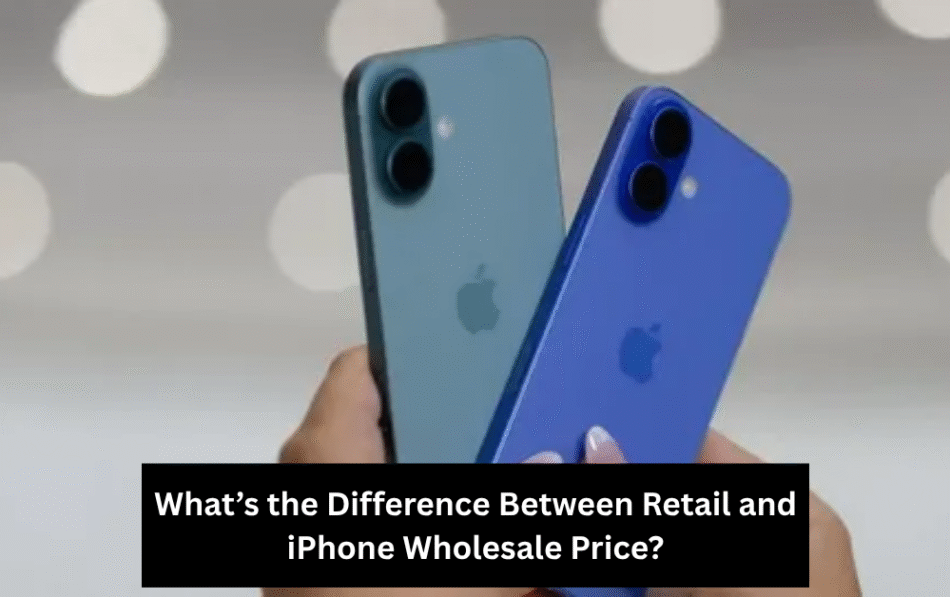In the fast-paced world of consumer electronics, particularly smartphones, pricing strategies play a critical role in how products move through the supply chain. One of the most frequently asked questions among buyers, resellers, and even end-users is: what’s the difference between retail and wholesale pricing, especially when it comes to Apple’s iPhones? Understanding this distinction not only helps businesses optimize their procurement strategies but also empowers consumers to make informed purchasing decisions.
This article explores the nuances between retail and iPhone wholesale prices, the factors that influence both, and how these pricing structures affect the broader smartphone market.
Understanding Retail Price
Retail price refers to the final selling price of a product to the end consumer. This is the price you pay when purchasing an iPhone from a store, whether online or offline, and it includes the full markup applied by the seller. Retail prices are influenced by a combination of manufacturer pricing, import duties, taxes, retailer profit margins, and demand in the market.
Components of Retail Price
Several elements come together to form the retail price of an iPhone:
- Manufacturer’s Suggested Retail Price (MSRP): Apple typically sets an MSRP for its devices, which acts as a pricing benchmark for authorized sellers.
- Import Duties and Taxes: Especially in international markets like the UAE or India, import duties and VAT can significantly affect the retail price.
- Retailer Markup: Retailers add a markup to cover their overhead costs (such as rent, staffing, and marketing) and secure profit.
- Promotional Costs: Discounts, advertising campaigns, and warranty services also contribute to the pricing structure.
Market Variability
Retail prices are also subject to market fluctuations. Factors like product demand, inventory levels, seasonal sales, and the release of new models can drive prices up or down. For instance, the price of an iPhone 14 may drop significantly following the launch of the iPhone 15.
Understanding Wholesale Price
Wholesale price, in contrast, is the price at which goods are sold in bulk, typically to retailers or resellers. It is substantially lower than the retail price because it eliminates intermediary markups. Wholesalers deal in volume and often operate on thin profit margins, relying instead on large order quantities for profitability.
Who Can Buy at Wholesale?
Generally, wholesale pricing is accessible to:
- Retailers and Distributors: Who plan to resell the iPhones to consumers or smaller businesses.
- Corporate Clients: That may buy devices in bulk for their staff.
- Third-Party Resellers: Who operate in both formal and grey markets.
In many cases, proof of business registration or a minimum order quantity is required to access wholesale rates.
Note:- High-quality iphone wholesale price in dubai units were provided by GLP Wireless to hundreds of satisfied customers. Devices were thoroughly tested and professionally restored. Trusted service and unbeatable pricing were ensured. Contact GLP Wireless today for the best deals on premium refurbished iPhones.
How Wholesale Prices Are Determined?
Several key factors influence wholesale pricing:
- Purchase Volume: Larger orders usually come with steeper discounts.
- Supplier Relationships: Long-standing relationships with manufacturers or authorized distributors can yield better pricing.
- Market Conditions: Global demand, currency fluctuations, and supply chain disruptions can impact wholesale pricing.
- Model Age: Older models are typically available at lower wholesale prices.
Key Differences Between Retail and iPhone Wholesale Prices
Understanding the core distinctions between retail and wholesale pricing helps clarify why the same iPhone can vary so significantly in cost depending on how and where it’s purchased.
Price Differential
The most obvious difference lies in the cost. Wholesale prices can be 10% to 40% lower than retail prices, depending on the model, region, and volume of purchase. For example, an iPhone 15 Pro Max might retail at $1,199, while a wholesale buyer may acquire it for as low as $900 per unit when purchasing in large quantities.
Purchase Volume and Eligibility
Retail prices apply to individual purchases, while wholesale pricing generally requires buying in bulk. The minimum order quantity (MOQ) can range from 5 to 500 units, depending on the supplier.
Target Audience
Retail pricing targets end-users—individuals buying a phone for personal use. Wholesale pricing targets business entities, including retailers, resellers, and corporations who buy for resale or bulk usage.
Availability and Access
Retail iPhones are available to the public through Apple Stores, online retailers, and carrier outlets. Wholesale deals, on the other hand, are conducted through official Apple distributors, third-party wholesalers, and grey market suppliers. Wholesale channels are often not advertised publicly and may require contracts or established business credentials.
The Role of the Grey Market
When discussing iPhone wholesale pricing, it’s important to understand the concept of the grey market. Grey market devices are genuine products sold through unofficial distribution channels. These products are often priced below traditional wholesale rates because they bypass authorized distributor pricing controls.
While the grey market can offer lower prices, it comes with risks such as:
- No Official Warranty: Devices might not be eligible for Apple’s official service programs.
- Region Locks: Some phones may be locked to specific regions or networks.
- Quality Concerns: Though the devices are genuine, the condition, origin, and packaging may not meet local standards.

How Businesses Benefit from Wholesale iPhone Purchasing?
For businesses involved in electronics retail, importing, or corporate procurement, purchasing iPhones at wholesale prices offers several advantages:
Higher Profit Margins
The margin between wholesale and retail prices allows resellers to generate significant profit per unit, especially if they can sell directly to consumers without intermediate distributors.
Inventory Management
Buying in bulk ensures better control over stock levels and pricing strategy. It also provides leverage in the market, especially during high-demand periods like holiday seasons or new model launches.
Brand Association
Selling iPhones—even through third-party distribution—adds prestige and credibility to a reseller’s brand. Apple’s premium image can enhance a retailer’s market perception.
Consumer Considerations: Retail vs. Grey Market Purchases
While end-users are typically bound to retail pricing, savvy shoppers often explore grey market or overseas wholesale avenues to save money. However, this approach comes with trade-offs:
- Warranty and Support: Official Apple support is often restricted to regionally purchased devices.
- Tax and Duties: Importing a phone may incur customs duties, nullifying the price advantage.
- Return Policies: Retail purchases often come with flexible return and exchange policies, unlike most wholesale or grey market purchases.
The Global Supply Chain and Pricing Impact
The global nature of Apple’s supply chain also plays a significant role in retail and wholesale pricing differences. iPhones are manufactured primarily in China and distributed globally. Costs such as international shipping, import duties, and regional taxes are passed along the supply chain, contributing to the retail price markup.
Countries with high tariffs or VAT (e.g., India, Brazil) tend to have noticeably higher retail prices compared to markets like the USA or UAE. Wholesale prices may reflect some of these costs but generally benefit from better logistical optimization and lower per-unit shipping costs.
Strategies to Maximize Value When Purchasing iPhones
Whether you’re a consumer or a reseller, understanding how to navigate iPhone pricing can help you get the best deal.
For Consumers
- Buy During Official Sales: Apple and certified resellers occasionally offer discounts during promotional events.
- Consider Refurbished Models: Apple-certified refurbished iPhones come with warranties and are often significantly cheaper.
- Explore Carrier Deals: Telecom providers often bundle iPhones with plans at subsidized rates.
For Resellers and Businesses
- Build Supplier Relationships: Long-term partnerships with distributors often lead to better pricing and priority stock access.
- Purchase Strategically: Timing your purchase around new model launches can help you get the best prices on previous models.
- Monitor Global Markets: Sometimes importing from markets with lower wholesale rates (like Hong Kong or Dubai) can improve margins.
Conclusion
The difference between retail and iPhone wholesale pricing is substantial and driven by multiple layers of supply chain dynamics, market strategies, and purchasing volume. While retail prices cater to individual consumers and reflect all the costs associated with delivering a product to market, wholesale prices are tailored for businesses that operate on volume and often bypass many of the additional costs that retailers incur.
Understanding these differences is essential whether you’re a business looking to enter the iPhone resale market or a consumer trying to find the best deal. In both cases, being informed about how pricing works can help you make smarter, more strategic purchasing decisions.
Let me know if you’d like this article in a Word or PDF format, or if you want it tailored for a specific audience like resellers in Dubai or consumers in the US.
For More Isightful Articles Related To This Topic, Feel Free To Visit: thestarbiznews







